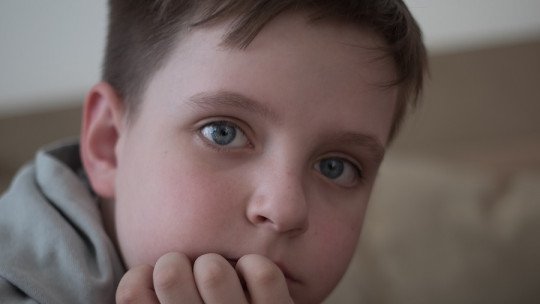
ADHD is one of the most common childhood problems. This disorder not only affects the academic sphere, but also the social, family and, in adulthood, the workplace. Early diagnosis and treatment increases the child’s chances of having a better quality of life.
Below you will find a summary of What is psychological intervention for ADHD? explaining the main tools that psychologists specialized in this disorder use.
Characteristics of psychological intervention for ADHD
Psychological intervention for ADHD (Attention Deficit Hyperactivity Disorder) uses a set of psychotherapeutic techniques to help children and adolescents develop their cognitive abilities while learning to manage and control the symptoms of the disorder. Psychological therapy is essential, providing the necessary behavioral and cognitive strategies so that patients with ADHD have the highest quality of life possible.
The different methods and techniques of psychological intervention for ADHD focus on developing the self-control capacity of children and adolescents, managing the main symptoms of the disorder, managing and controlling frustration, improving and training their social and communication skills. To do this, it uses different strategies, using behavioral procedures, self-control, instructions, and relaxation, among others.
Below we delve into the various approaches to ADHD in the context of therapy.
1. Psychoeducational approach
The psychoeducational approach to ADHD consists of teach the patient and his family what the main characteristics of the disorder are and what can be done to improve both the behavior, adaptability and quality of life of the child and his or her immediate environment.
In this context, the following is done:
2. Cognitive-behavioral therapy
The cognitive-behavioral approach has proven to be the most effective psychotherapeutic tool in a multitude of disorders, including ADHD. This therapy has shown great effectiveness in reducing disruptive behaviors in boys and girls with ADHD, making them acquire greater control over their behavior. For its application and effectiveness, the involvement of the patient, the child or adolescent, and the people responsible for their education, parents, teachers and other caregivers, is essential.
The involvement of parents is especially important since they are the ones who apply the guidelines at home and have direct experience with their child’s behavior.
The aspects worked on in cognitive-behavioral therapy are:

3. Behavior modification therapy
Behavior modification therapy is based on operant conditioning making use of reinforcers and punishments to contribute to the extinction of disruptive behaviors and the acquisition of positive behaviors.
Among the aspects being worked on we find:
Within this approach, we can mention several operant techniques.
3.1. Positive reinforcement
Briefly, positive reinforcement is a procedure through which An attractive or good stimulus is presented, something that interests the patient, after he or she has done the behavior that interests us as therapists. The purpose of applying positive reinforcement is to increase the likelihood that the desired behavior will occur again.
- Related article: “The 16 types of reinforcers (and their characteristics)”
3.2. Token Economy
The token economy is an operant technique that has become especially popular in the field of psychoeducation. This system establishes a series of specific behaviors which will grant rewards to the patient if they respect them. The token economy aims to encourage good behavior through the positive reinforcement provided by tokens or prizes, and to reduce unwanted behavior by resorting to negative punishment in the form of the loss of such tokens.
- You may be interested: “Token economy: what it is and how it is used in therapy and education”
3.3. Extinction
Extinction is the main technique to reduce a behavior or directly eliminate it. It is about reducing the reinforced response to an unwanted behavior. To do this, it is essential to determine what is reinforcing the behavior in order to eliminate such reinforcement and consequently eliminate the response.
3.4. Time out
Time-out is a technique that aims to deprive the child of any reinforcers that may exist in the context of bad behavior. Basically, it consists of isolating the child for a short period of time, no more than 10 minutes. It must be previously explained to the child that his behavior has not been appropriate and is forced to spend time in isolation to reflect on what happened.
3.5. Overcorrection
Overcorrection is applied when the child has negative behavior. You are asked to rectify what you have done wrong and restore the damage caused. In the case of positive practice overcorrection, the individual who has done something wrong must repeat a positive behavior, which is indicated, as compensation.
4. Social skills training
The social area is one in which children and adolescents with ADHD have the most difficulties. In psychotherapy, the aim is to promote the acquisition of guidelines, strategies and skills to make the patient relate more appropriately to their environment. This is a training process that will promote the social interaction of children and adolescents with ADHD with their peers and avoid problems such as social rejection, low self-esteem and isolation. Among the aspects being worked on we find:
- Self-esteem, self-concept and emotional assertiveness
- Socialization rules
- Social competence skills
5. Relaxation and stress control
Relaxation techniques help control hyperactivity. Along with body work, The patient learns to channel his excess activity, agitation, nervousness, stress and anxiety, if any. Relaxation is especially useful to promote positive emotions, helping the patient stay calmer. The greater the calm in the family unit, the better the communication between its members and the better the relationship with the child.
Useful aspects to work on in ADHD related to relaxation are:
- Breathing
- Body expression
- Leisure activities: sports, hobbies of interest to the child…
- Psychomotor skills
6. Internal language and self-instructions
It is very important to address the internal language of the patient with ADHD, helping you internalize rules and instructions that help you have organized and reflective thinking.
The self-instruction technique is a behavior change technique, which aims to modify the patient’s thoughts by replacing them with others that may be more useful and effective in achieving their goals or objectives. These are guidelines that the patient gives to himself, to direct his way of acting.
Examples of self-instructions would be:
- “I’m going to listen to the teacher.”
- “I have to cross the street carefully.”
- “I must leave the chair properly placed on the desk.”
- “I shouldn’t scribble on the classroom table.”
- “I have to check if I have all the books I need to study.”
7. Self-control techniques
According to experts who work with children and adolescents with ADHD, Many self-control problems can be improved by teaching the patient to self-moderate. These techniques are aimed at getting you to see, understand and keep in mind that you must reduce your impulsive behaviors, those that are immediately gratifying, but that in the medium and long term do not help you at all, neither socially nor academically.
To apply a self-control program, you can follow the following steps:
- Identify what the main problem is and set achievable goals.
- Make the patient commit to modifying their behavior.
- Record data and identify possible causes of the problem.
- Design and implement a treatment program.
- Prevent relapse and ensure that the improvement lasts over time.
8. Parent training
Parent training and family interventions are often effective. In the event that there is a lot of friction and few positive interactions in the parent-child relationship, psychological intervention for ADHD reinforces the parents’ skills so that they can better manage the situations. Parents are taught effective communication methods to set standards and take charge.
Parents learn to establish eye contact with their child, give them commands one at a time, and do so in positive contexts. Additionally, parents are taught how to establish appropriate negative consequences or sanctions for each specific behavior problem, tailored to ADHD. These consequences must be closely related to the unwanted behavior, that is, when punishments are applied, the child is aware that they are given because he has done a bad thing that he knows what it is.
Are you looking for psychological assistance in a case of ADHD?
If you want psychotherapeutic support for ADHD, contact us.
At Cribecca Psicología we serve people of all ages, families and also couples. We offer in-person and online sessions.








